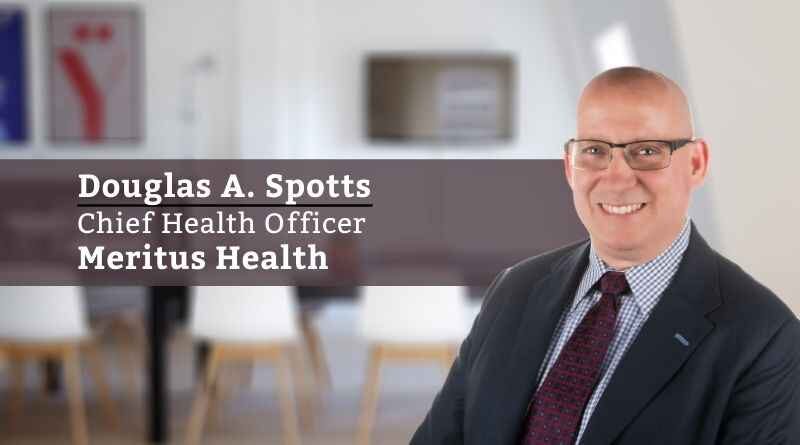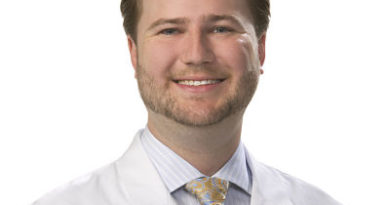Bold Goals 2030 – Population Health for a community in need!
By Douglas A. Spotts, Chief Health Officer, Meritus Health
Meritus Health, a 275-bed independent hospital in Hagerstown, Maryland with a 100-year history of serving Hagerstown and rural Washington County, embarked on a Bold Goal 2030 strategic planning exercise in January 2020 around every aspect of the elusive Quadruple Aim: Health, Healthcare, Joy at work , and Affordability of Care. Little did we know that just a few weeks later, the “world would shut down” as we knew it and all aspects of our daily lives would be redefined around emergency health and healthcare needs. The Health Bold goal was decided based on the recently completed Community Health Needs Assessment, after interviewing physicians, medical providers, and nurses as well as a group of over 40 community stakeholders, Meritus Board, and Senior Team members. The statistics of Hagerstown and Washington County, Maryland show approximately 64% of the population overweight. The county is ranked 18th out of the 24 counties of Maryland in this regard. Diabetes prevalence is approximately 36%, greater than other counties in the State, and Maryland is more overweight and diabetic than many other states 36th out of 50. These statistics, coupled with the fact that 1 out of every 2 Americans is at risk for prediabetes, largely due to not being at an ideal body weight and living sedentary lifestyles, informed the stakeholders to choose the goal of “Losing (and sustaining) one million Community Pounds by 2030. This sounds incredibly daunting at any time, but particularly during a pandemic of epic proportion and one that very quickly delayed our Bold Goals “Health” launch in April 2020. Looking at the approximately 110,000 adults who live in Washington County, and asking them all to get 1-5 pounds closer to their ideal body weight and sustain it over ten years, puts this big, bold goal into more perspective. But how to build an exciting, sustainable, and focused campaign over ten years with specific yearly focal points, milestones, and metrics to measure success? Why is this important at any time but especially during COVID-19?
COVID-19 revealed the stress on healthcare workers and patients alike, with obesity contributing to a worse prognosis for those patients who tested positive for COVID-19.
The answer is, of course, addressing the increased risk of chronic health conditions resulting from being overweight or obese, diabetes, joint disorders and arthritis, heart and lung disease, and a higher risk of infection and mortality from COVID-19. Even with the delay caused by COVID-19, the “campaign” to lose one million community pounds had to start with the county’s largest employer, Meritus Health. Getting access to our own data on obesity and diabetes risk was brought into focus by being two years into our successful unified electronic health launch through EPIC. The statistics, not surprisingly, mirrored those of the community. COVID-19 revealed the stress on healthcare workers and patients alike, with obesity contributing to a worse prognosis for those patients who tested positive for COVID-19. The toll on mental health, activity, and unhealthy eating, as “the world shut down,” taught us valuable lessons on health disparity and the social determinants of health that affect health outcomes 80% of the time compared to direct medical intervention in an office setting. Innovation and adaptability were employed, “aims within the strategic bold gold framework for health,” at the beginning of the pandemic. Telehealth was instituted for behavioral health, primary care, and specialty care, all within a matter of weeks, and aimed at keeping patients safe and in appropriate care settings during the quarantine. This included a solution for telehealth to independent providers in our community who did not use EPIC in their offices or have imbedded video visit capability in their own EHR system. Overnight, telehealth regulatory barriers came tumbling down in our unique corner of the world including the narrow swath of Maryland bordered closely by West Virginia, Virginia, and Southern Pennsylvania.
As we rushed to managing COVID during the first surge in an incident command structure with the local county health department and then back into “normal “ operations of returning elective surgeries and preventative care back to the hospital and offices., The focus was given to 3 aspects of Health for our fiscal year (FY)21 Aims-
- Build the infrastructure for weight loss both within the health system walls as well as in the community.
- Improve access of care by reducing emergency department time of arrival to discharge/disposition to beat 195 minutes, schedule primary care follow up appointments at the time of discharge from the hospital, and increase video visits after 5 PM to promote broadened accessibility of provider visits and
- Finally to increase screening of all patients for the social determinants of health in both the inpatient and ambulatory settings.
Additional employee health measures besides calculating cumulative pounds lost and maintained by a weight tracker built by our IT team and launched in July, included increasing healthy blood pressure screening and educational awareness, increase the same regarding diabetes management and pre-diabetes risk, increased employee participation in a mindfulness-based stress reduction activities, increased employee movement and participation in at least one, structured activity, and improved healthy eating choices offered on campus including removal of all sugar-added beverages
The results till date shows that over 300 of Meritus’ approximately 3000 employees have signed in to the weight tracker with a cumulative loss /pledge of loss of 3500 pounds toward our FY21 10,000-pound loss goal. That’s over 10% of our workforce in just a short period of time. Imagine unleashing the other 90% of our workforce in a meaningful and fulfilling way toward our 110,000 pledge of lost and maintained pounds over the ten years of the campaign. More exciting yet, is the rescheduled community launch on October 6, 2020 where at least 20 organizations have pledged over 250,000 pounds toward the ten year goals. By the New Year, we hope to have 75 organization and employer partners pledging all one million pounds. The campaign is entitled “Go for Bold: Do, Eat, and Believe in a Healthy Washington County,” and resources similar to those for the hospital employees of Meritus Health will be made available on the Healthy Washington County website. This will include the weight tracker which will measure cumulative pounds lost in our community. Future metrics will measure outcomes based on activity, healthy eating and lifestyle changes, and improved access to mental health and addiction resources. Alignment with the Maryland Department of Health’s Diabetes Action Plan is paramount.
Aspiration for healthcare “zero harm,” becoming the highest quality, lowest cost health care system in Maryland, and for recapturing joy at work, all begin with the health of the community outside of the traditional hospital walls. This has never been so magnified as in this time of the pandemic. This community is comprised of resilient citizens who are up for the challenge.
Join us and “Go for Bold” in your own communities and follow our progress!



